Essential Guide to CHD Awareness Month
CHD. What is CHD? Are you ready?? It’s almost CHD Awareness Month! I’m covering loads of CHD basics below. Use this guide to help yourself, your family and your friends understand everything they might not yet know about CHD. Help us raise CHD awareness and join the fight for all those affected!
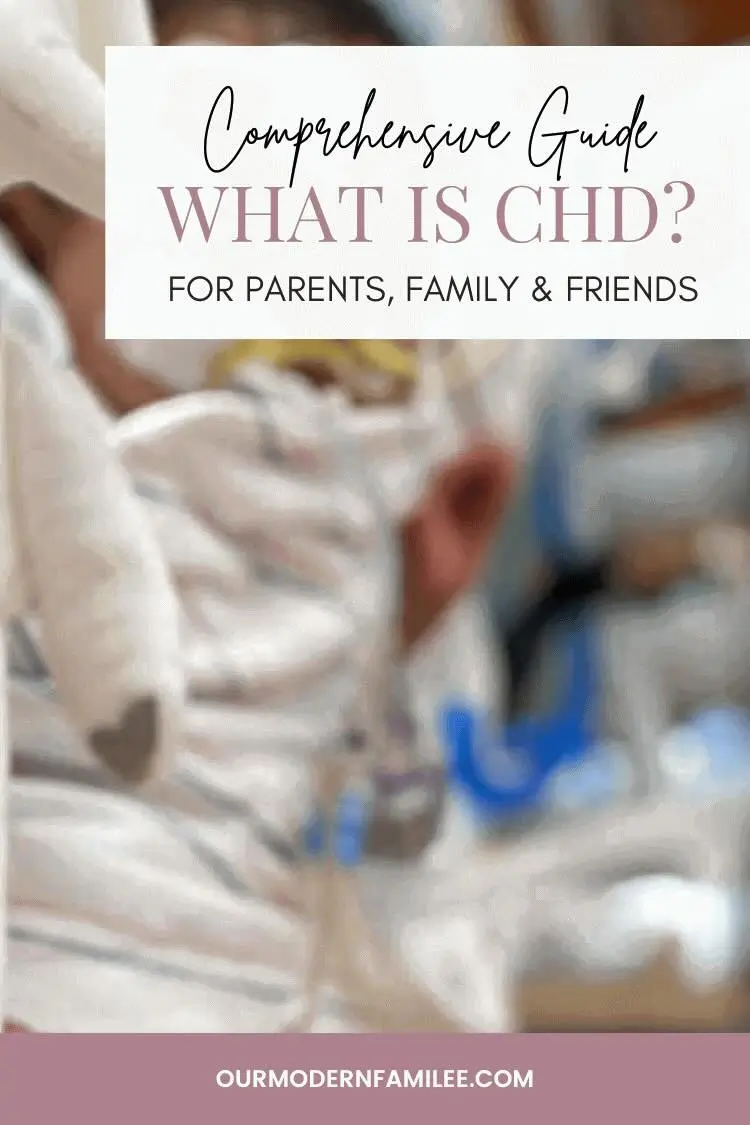
Important Events & Dates to know for CHD Awareness Month
What is CHD awareness month?
CHD Awareness Month is a month dedicated to raising awareness about Congenital Heart Defects. Heart Month is a nationally recognized effort to raise awareness for heart disease and heart health.
Some CHD organizations and individuals choose to use this same month to focus entirely on CHD awareness for the entire month.
When is CHD awareness month?
CHD awareness month is the month of February, the same as Heart Month.
What is CHD awareness week?
CHD Awareness Week is a nationally recognized week to focus specifically on raising awareness, education, and funding for Congenital Heart Defects.
When is CHD awareness week?
CHD awareness week is February 7 – February 14, 2025. It occurs annually on these dates.
What is Heart Month?
In the United States, Heart Month is a time to focus on cardiovascular health and raise awareness for heart disease, the #1 cause of death in the US.
When is Heart Month?
Heart Month occurs the whole month of February.
What is National Wear Red Day?
In the US, National Wear Red Day is a campaign put on by the American Heart Association to raise and spread awareness about cardiovascular disease and stroke in millions of women all over the nation. People wear red to call attention to the campaign and its efforts.
In the UK, Wear Red Day is organized by the Children’s Heart Surgery Fund. Their focus is specifically on raising awareness of congenital heart disease.
When is National Wear Red Day?
National Wear Red Day is Friday, February 7, 2025. National Wear Red Day occurs annually on the first Friday of February. Both the US and UK celebrate Wear Red Day on the same date.
What is World Heart Day?
World Heart Day is “a global celebration of the heart” started by the World Heart Federation. It’s a global campaign to focus on heart health and raise awareness of cardiovascular disease, the #1 cause of death worldwide.
When is World Heart Day?
World Heart Day is September 29, 2025. No, this is not in February like the rest of these CHD Awareness Month and Heart Month events. However, it’s a related heart event that I thought you should know about too!
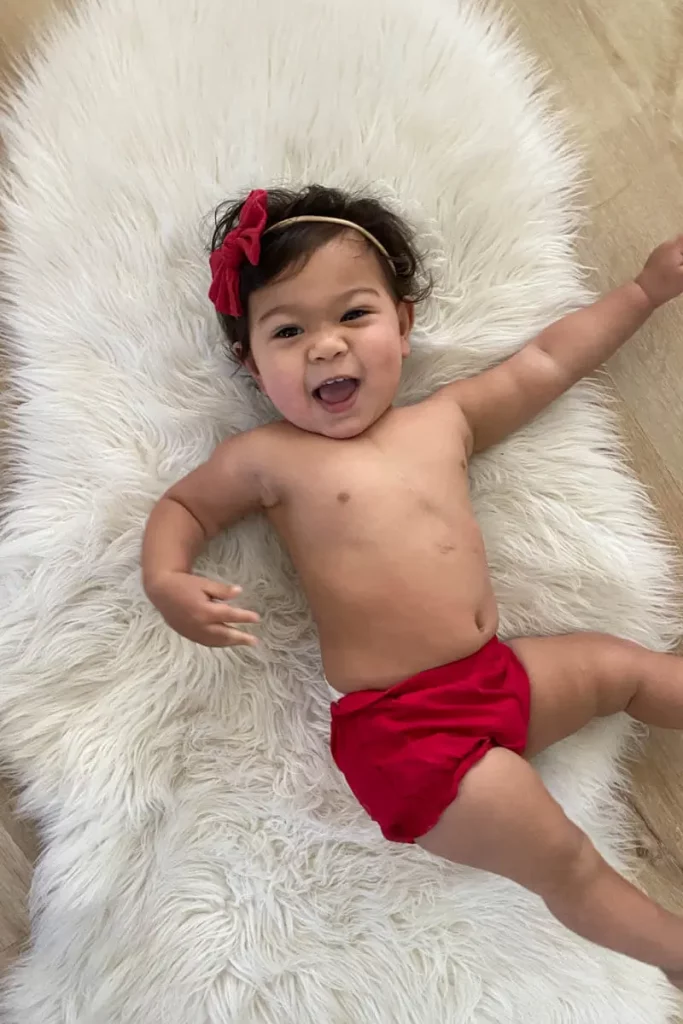
What you should know about CHD
What does CHD stand for?
CHD stands for both Congenital Heart Defects and Congenital Heart Disease. (It can also stand for coronary heart disease, but that’s not what this guide is about.)
What is CHD?
A Congenital Heart Defect (CHD) is when some part of the heart does not form, or forms irregularly during a baby’s development in utero.
Congenital means present at birth. So babies born with a congenital heart defect were born with some type of abnormality in their heart. Congenital heart defects include abnormalities in the heart’s chambers, valves, or major blood vessels.
This might look like some aspect being narrower or smaller than is typical, holes in irregular spots, something might be switched or multiplied, irregularities in the electrical system or there could be an obstruction or something missing altogether.
Some heart warriors may have a single heart defect while others have two, three, or even several.
Examples of Congenital Heart Defects
- Aortic Valve Stenosis (AVS)
- Atrial Septal Defect (ASD)
- Atrioventricular Septal Defect (AV canal defect or AVSD)
- Coarctation of the Aorta (COA)
- Ebstein’s Anomaly
- Hypoplastic Left Heart Syndrome (HLHS)
- Hypoplastic Right Heart Syndrome (HRHS)
- Patent Ductus Arteriosis (PDA)
- Pulmonary Atresia
- Pulmonary Valve Stenosis
- Tetralogy of Fallot (TOF)
- Transposition of the Great Arteries (TGA)
- Tricuspid Atresia
- Total Anomalous Pulmonary Venous Connection (TAPVC)
- Truncus Arteriosus
- Ventricular Septal Defect (VSD)
- Wolff-Parkinson-White (WPW) syndrome
Congenital Heart Disease (CHD) is a type of heart disease that includes congenital heart defects and is also inclusive of the impact the defects have had on the CHDer’s physical and mental health.
A heart warrior still has to live with and manage their Congenital Heart Disease for life even if their heart defects can be repaired.
How is Heart Disease different from Congenital Heart Disease?
Heart Disease is all inclusive of all different types of heart disease, including Congenital Heart Disease. Some examples of heart disease include coronary artery disease, arrhythmias, congenital heart defects, heart muscle diseases, and heart valve diseases.
Acquired heart disease is heart diseases that happen to a typically healthy heart over time. However, Congenital Heart Disease (CHD) are heart defect and disease that has been present since birth.
How is a Congenital Heart Defect diagnosed?
A Congenital Heart Defect (CHD) is diagnosed using a combination of different tests and/or procedures, such as echocardiogram (echo), electrocardiogram (EKG or ECG), chest x-ray, pulse oximetry, cardiac MRI, Cardiac catheterization.
They can be diagnosed prenatally, shortly after birth, at a few weeks or months old, or even several years later in life. Diagnosis timing is mostly a factor of the type(s) of CHD, the degree of impact on heart function, and the type and level of care available.
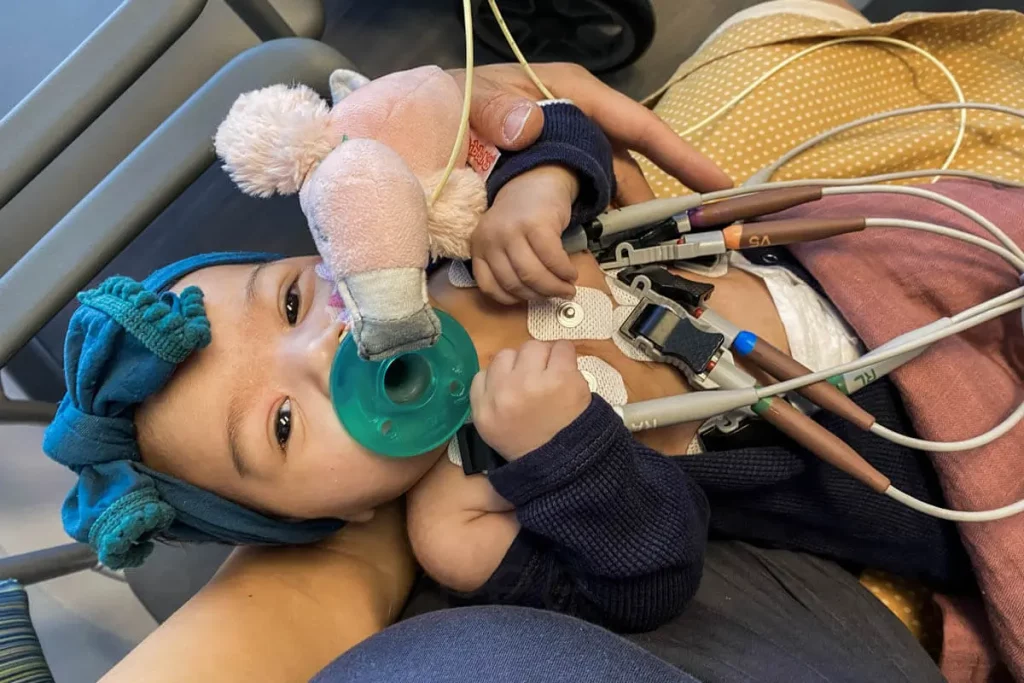
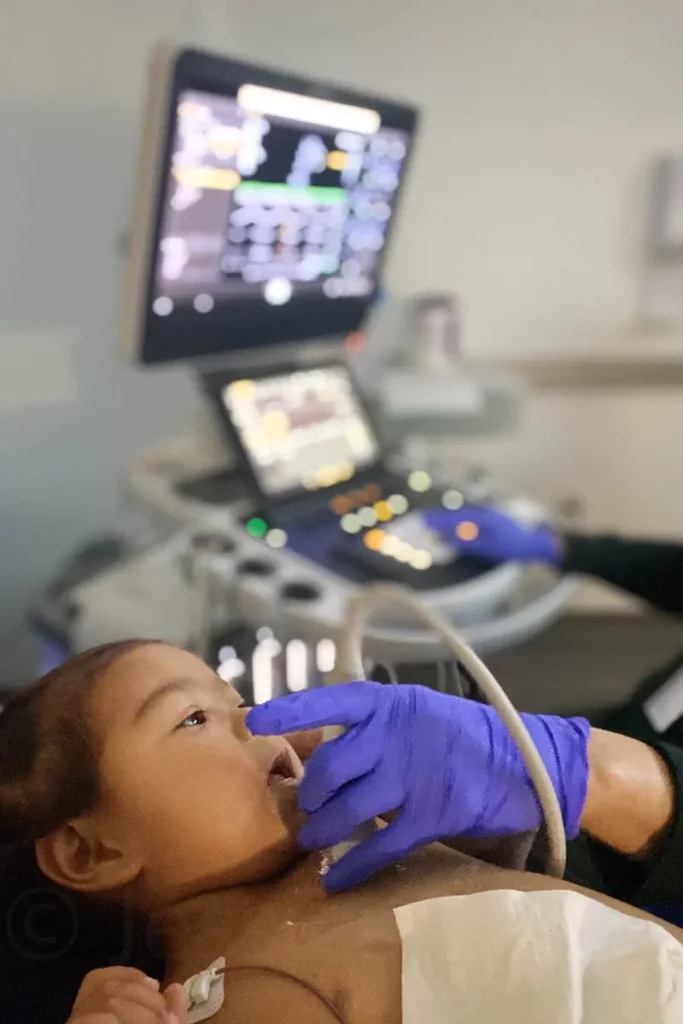
Why do Congenital Heart Defects occur?
We do not know the cause of most Congenital Heart Defects. About 15-20% of CHDs can be linked to a genetic cause, however, the rest have no known explanation.
What are symptoms of CHD?
CHDs vary and therefore symptoms vary significantly as well. Symptoms could present immediately at birth, hours or weeks later, and others may go years without symptoms. It is even possible for someone to have a CHD and never have symptoms.
Some common CHD symptoms are:
- Heart murmurs
- Low oxygen levels
- Fast breathing
- Shortness of breath and tiring more easily
- Poor blood circulation
- Blueish-looking skin and lips
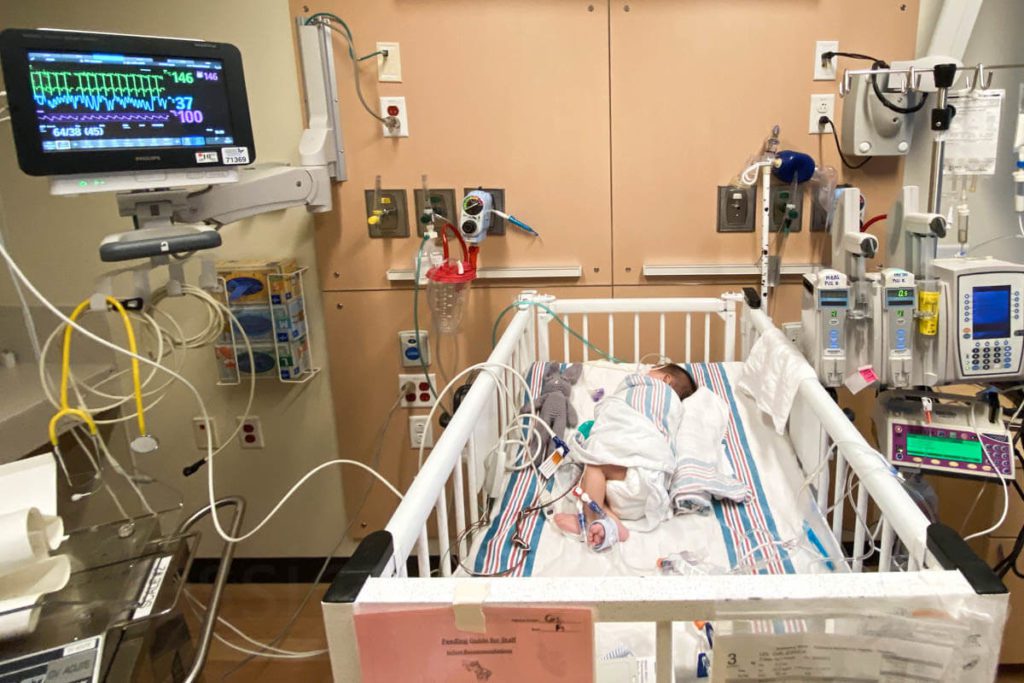
How is CHD treated?
The treatment for CHD depends on the specific defect and severity. Some require no interventions at all, only monitoring. Treating more severe cases of CHD may include multiple heart catheters, open-heart surgeries, medications, heart transplants, and more.
Current CHD treatments may offer better outcomes but still, there is no cure for CHD.
How does CHD impact someone’s life?
The impact of CHD varies depending on the type of CHD(s) and the degree of severity. Some may not impact a person’s life at all. On the other end, some CHDs could impact numerous aspects of someone’s life.
Critical CHD can impact a baby’s ability to breathe, eat, and function. Typically this necessitates immediate intervention.
Over time, those with CHD could develop additional health problems such as eating and growth concerns, developmental delays, mental health challenges, exercise limitations, and additional heart and other organ problems.
How can CHD impact a family’s life?
CHD affects the whole family, not only the patient. Congenital Heart Disease can cause major emotional and financial strain. It might impact a family’s jobs, relationships, finances, mental health, physical health, sibling care, and more.

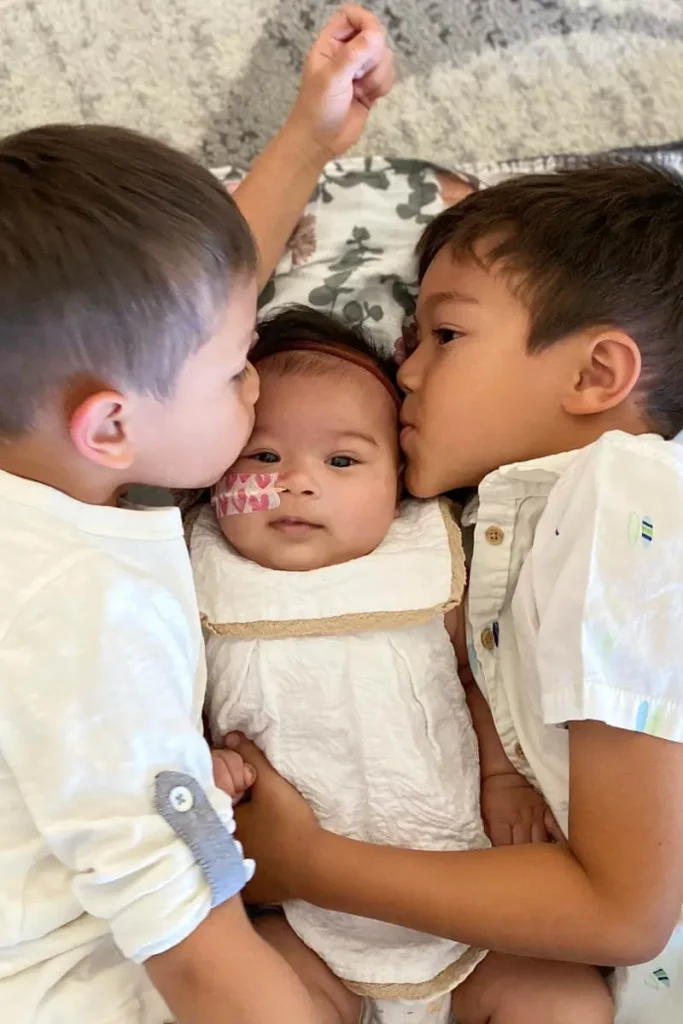
Why is CHD awareness so important?
Congenital Heart Defect awareness is unfortunately low relative to its prevalence. Awareness is essential to earlier detection, effective care plans, greater funding, more research, and better outcomes for those affected by CHD.
Facts about CHD
- CHDs are the most common birth defect in the United States and the primary cause of birth defect-related death in infants.
- Approximately 40,000 CHD babies are born each year in the US.
- It’s estimated that 2.4 million people (children and adults) are living with CHD in the United States today.
- CHDs are as common as autism.
- CHDs are 30 times more common than cystic fibrosis.
- CHDs are 50 times more common than childhood cancer.
- Of the babies born with CHD, 1 in 4 have a critical CHD.
- 25% of heart warriors will need heart surgery or other interventions to survive their first year of life.
- Of those with complex CHD, 25% will not survive to one year old.
- Approximately 15-20% of CHDs can be linked to a genetic cause, otherwise the rest are unknown anomalies.
CHD Research Efforts & Impact
- CHD research is extremely underfunded considering its prevalence.
- Thanks to advancements in CHD research and medicine, deaths from CHD have declined by 37.5% since 1999.
- Positive strides in CHD medical care are leading to notable progress in survival rates.
- Approximately 97% of infants born with a non-critical CHD are expected to celebrate their first birthday.
- Of infants born with a critical CHD, around 75% survive until their first birthday.
- Between 1979 and 1993, only about 67% of infants with critical CHDs survived to at least one year.
- In the 1950s, a mere 20% of individuals with critical CHDs survived until the age of 18.
- Due to CHD advancements, those with CHD are living longer and now there are more adults with CHD than children with CHD.
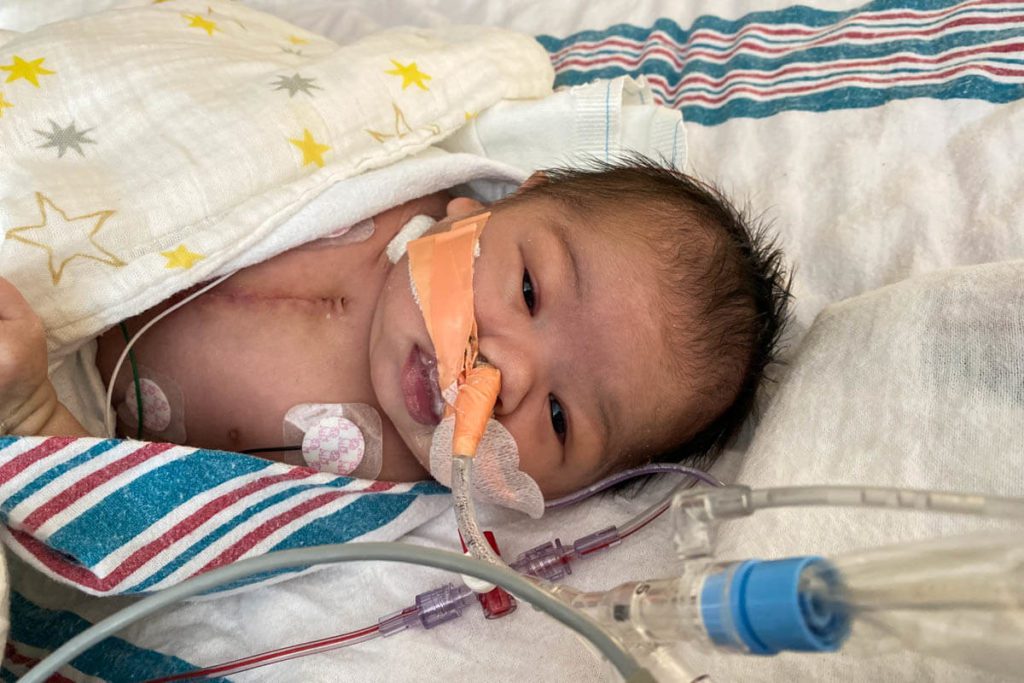
Ways to Help during CHD Awareness Month
There are several ways you can help and join us during CHD Awareness Month to propel the movement forward. Firstly, TALK about CHD.
Before my daughter’s diagnosis, I didn’t know CHD at all. Too many people don’t know about CHD considering how common it is.
- Share your story! If you are personally affected by CHD or have a heart warrior, tell their story to whatever degree and detail you are comfortable with.
- Participate in Conquering CHD’s Heart Month Awareness Challenge
- If Heart Month is triggering for you, pause or step back. CHD awareness is needed all year, not only in February, so take a break and pop back up later if and when you’re ready to.
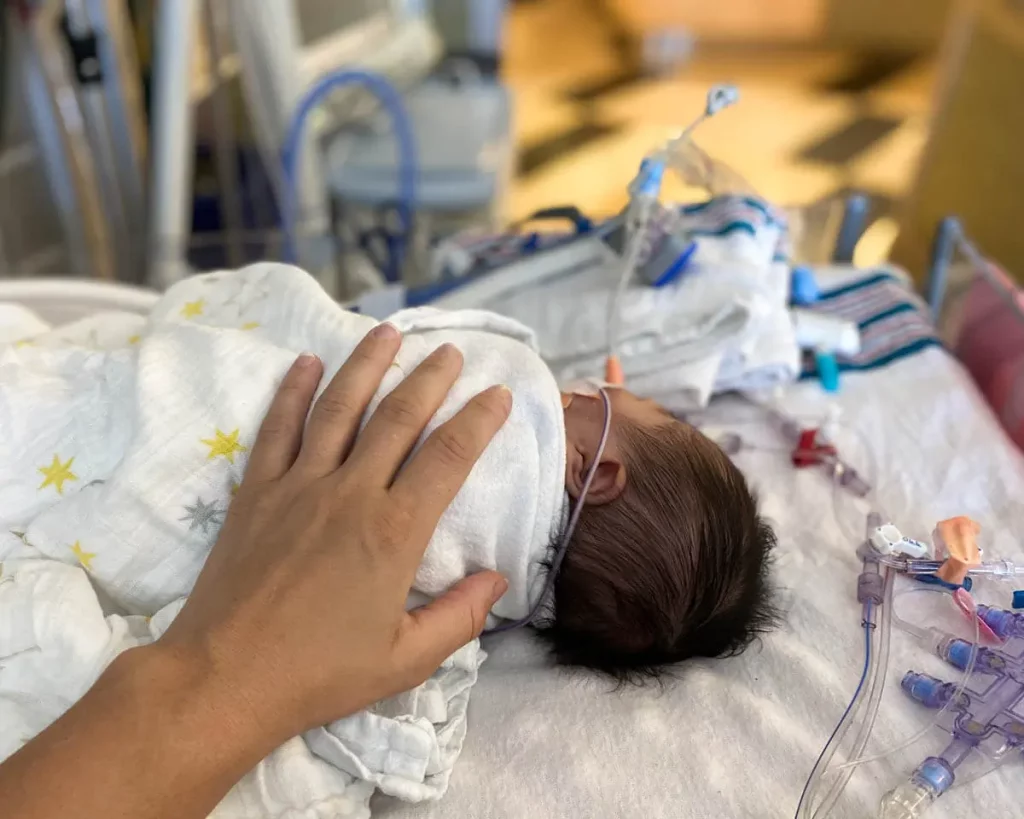
- Donate to CHD research and CHD organizations, and help raise funding for these efforts.
- Wear clothing in support of CHD Awareness Month & Heart Month – if anyone asks, use it as a conversation starter. Wear red, wear hearts, or special CHD-designed attire. Wearing red one day won’t do it. However, if you wear red every day for a week straight it might spark some questions and good conversation!
- Listen to others’ stories and journeys with CHD, and re-share (if permissible).
- Attend CHD or Heart disease-related events – look for events during February and through the rest of the year, such as heart walks, heart galas, fundraisers, and educational events.
- Read children’s books about CHD to your kids, or even suggest one to their teacher to share with the class. Foster early awareness and representation.
- Research and learn more about Congenital Heart Defects and Congenital Heart Disease and talk about it with others who might not know.
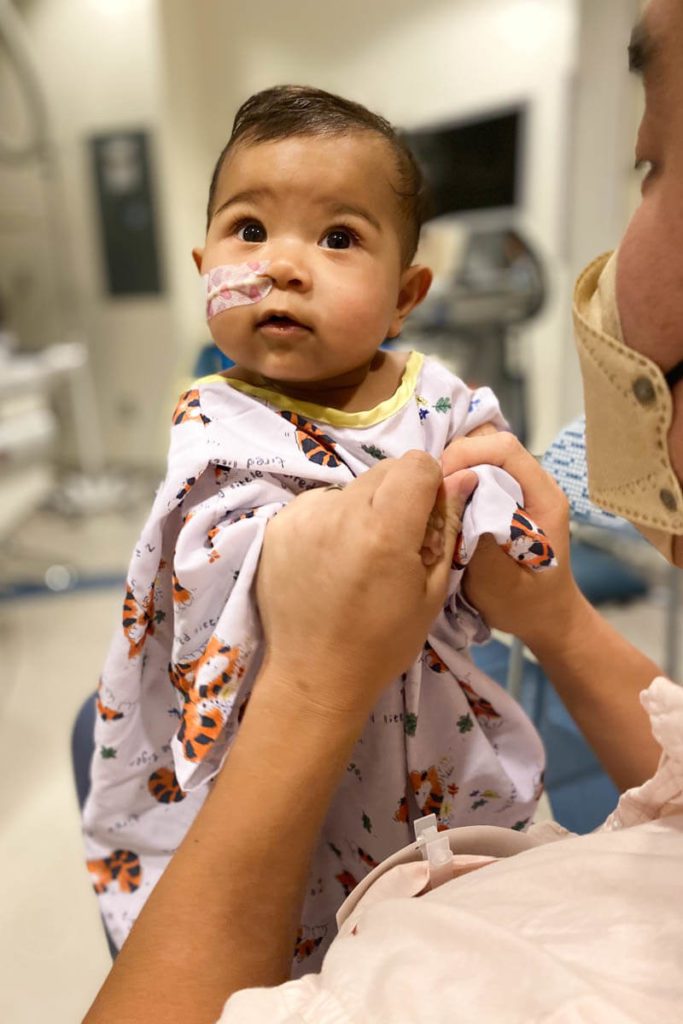
CHD Organizations to Know
During CHD Awareness Month make it a point to check out, engage with, and donate to CHD-specific organizations. There are a lot of great big heart disease organizations, which is important. AND we need more awareness and support of CHD-specific efforts.
Adult Congenital Heart Association
A US-based organization to provide support and resources to those with CHD and their families as they age.
“The mission of the Adult Congenital Heart Association is to empower the congenital heart disease community by advancing access to resources and specialized care that improve patient-centered outcomes. We are committed to promoting excellence for every adult CHD patient by increasing access to the highest level of care and developing standards to allow patients and families to identify physicians and facilities providing that care. Our vision is that every adult with CHD receives specialized cardiac care.”
CHD Coalition
A US-based nonprofit organization focused on improving the quality of life for those with CHD.
“Our mission is to: unite and support the CHD community, increase public awareness, and raise money for lifesaving medical research. From hospital recommendations to a shoulder to lean on, we offer community resources and a chance to build lifelong friendships. Together, we are united to make a change and become the greatest advocates for those affected by CHD.”
The Children’s Heart Foundation
A US-based non-profit organization dedicated to funding CHD research.
“Our mission is to advance the diagnosis, treatment, and prevention of congenital heart defects by funding the most promising research. To date, through 2021, The Children’s Heart Foundation has funded $15 million of CHD research and scientific collaborations— driving breakthroughs that have improved survival rates, longevity, and quality of life for individuals living with CHDs in dramatic and life-changing ways.”
Children’s Heart Surgery Fund
A UK-based organization raising funding for hospitals to provide better treatment and support for those with CHD and their families.
“Children’s Heart Surgery Fund was founded in 1988. Since then, we have awarded over £10 million in grants to the Leeds Congenital Heart Unit and the region’s supporting hospitals, helping countless CHD patients and their families.”
Conquering CHD
A US-based organization working to increase CHD awareness and provide support and resources to those affected.
“We exist to conquer the most common birth defect. We engage, listen, learn, and act. We create visibility and empower all impacted by CHD. Our work fights for all congenital heart disease patients and their families, from prenatal diagnosis through adulthood and those families who have lost loved ones.”
Enduring Hearts
A US-based non-profit dedicated to funding and improving heart transplant research.
“Enduring Hearts is a registered 501 (c)(3) nonprofit organization dedicated to funding innovative research aimed at improving the lives of children living with transplanted hearts. We work with our team of leading doctors and scientists in the field of transplantation, pediatric cardiology and immunology to drive leading-edge research that will make a transplant last a lifetime.”
HeartWorks
A US-based team trying to build hearts and work on a CHD cure.
“OUR GOAL: Treating children & adults with CHD using novel stem cell therapies that delay the need for a heart transplant forever. HeartWorks has designed a first-of-its-kind platform that brings together physicians, scientists, and engineers to find and develop treatments for the most severe forms of congenital heart defects (CHD) to further advance research in genetics, stem cell biology, clinical trials, and cell-based manufacturing.”
Mended Hearts
A US-based organization to offer support and community for those with CHD and their families.
“To inspire hope and improve the quality of life of heart patients and their families through ongoing peer-to-peer support, education, and advocacy. ©”
Sisters by Heart
A US-based support organization for those affected by single ventricle heart defects.
“We are an all volunteer led organization striving to help families dealing with a new single ventricle diagnosis. Our mission expands well beyond diagnosis, providing support, education, and empowerment to patients and families throughout the single ventricle lifespan.”
Tiny Tickers
A UK-based charity to help CHD patients and families and improve CHD medical care.
Jon Arnold, Tiny Tickers’ Chief Executive: “Our mission is ambitious but achievable. We can help improve detection rates. We can help make sure every baby gets great care. We can help save lives. We can make a massive difference for heart babies and their families – and that drives our work every single day.”
Let’s talk about CHD Awareness Month together
Once we started opening up about our daughter’s heart, others started opening up about their own and their family member or friend’s heart defects.
CHD is far more common than many of us realize. Even if you’re unaware, you likely know someone with a Congenital Heart Defect. Let’s start talking about it more. Save this guide, share it, and send it out.
Greater awareness sparks more conversations. This helps generate funding. And leads to more interest in advocacy and research. Which ultimately results in better outcomes for those affected by CHD.
Sources: AAP, AHA, CDC, Cleveland Clinic, Conquering CHD, Mayo Clinic, Nemours, NIH
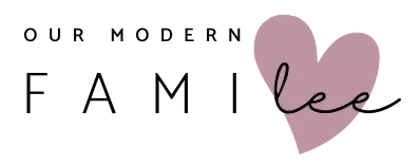
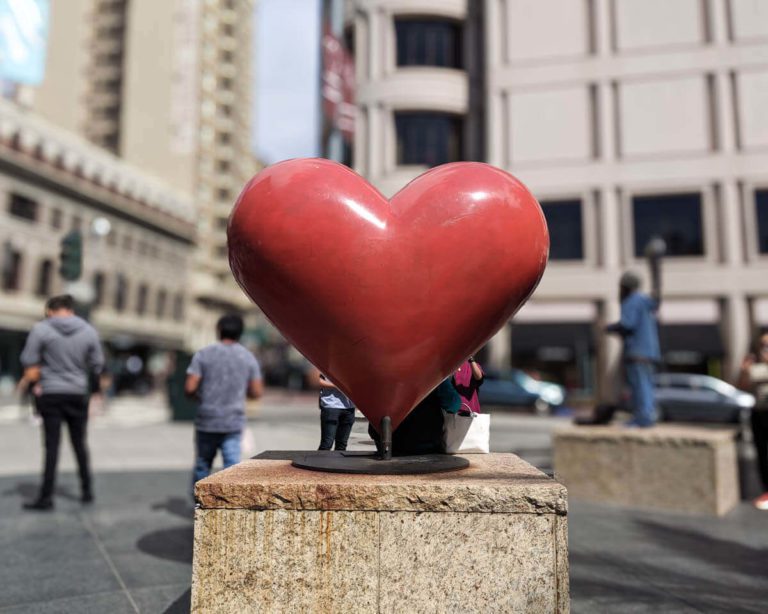
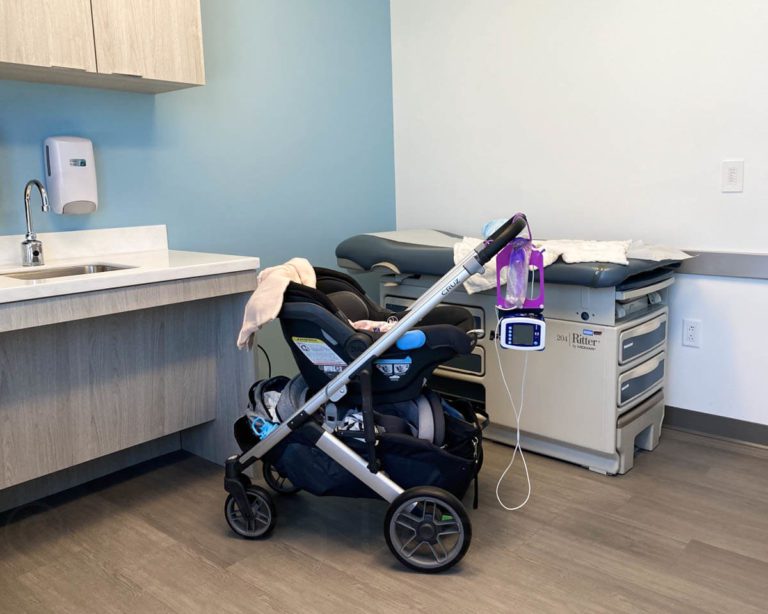
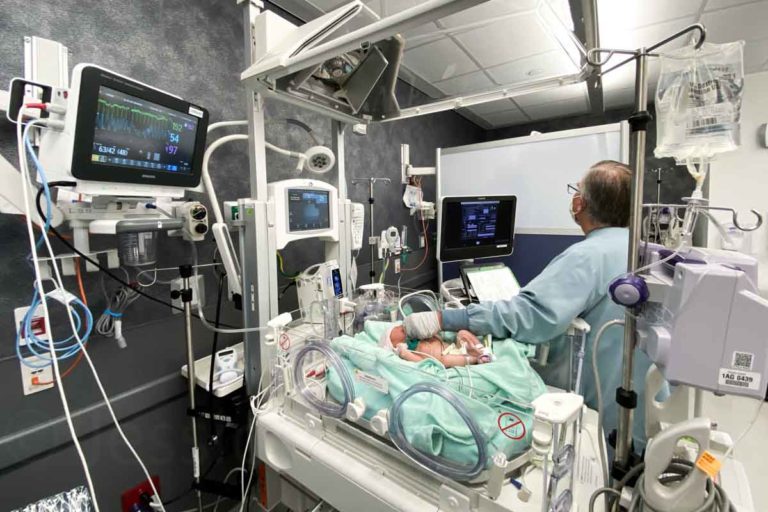
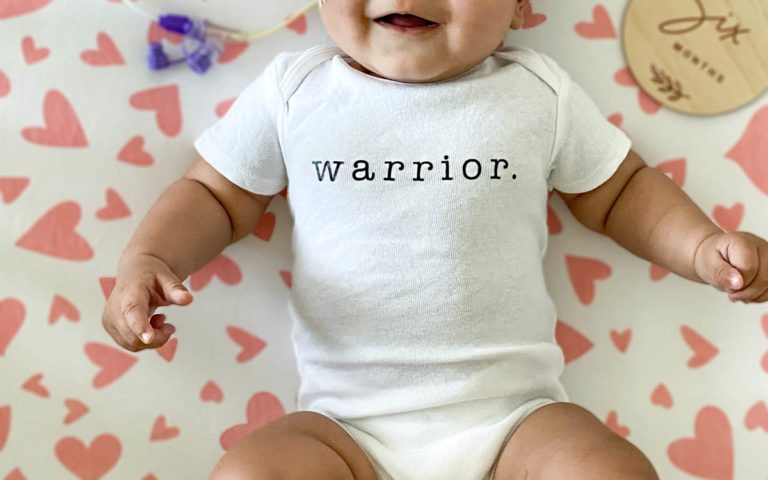

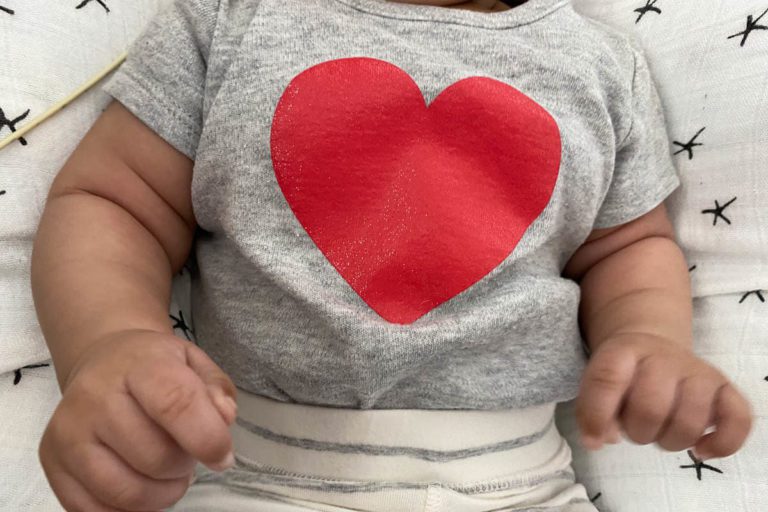
I just had to drop you a note after reading your guide on CHD Awareness. Living in NYC with a little heart warrior of my own, your words hit home in a big way. It’s been a rollercoaster since we got the diagnosis, and honestly, it felt like we were the only ones in this boat until I stumbled upon your post.
Navigating this CHD journey in the hustle and bustle of the city, trying to find the best care, juggling doctor’s appointments between work and life—it’s been intense. Your guide’s like a breath of fresh air, making me feel less alone and more armed with knowledge and support.
It’s crazy how CHD throws you into this whole new world you never knew existed. Sharing stories like ours is so powerful. It not only educates but also creates this invisible thread that connects us heart parents, making this journey a bit less daunting.
Thanks for putting it all out there. It’s a big city, but in moments like this, it feels a little smaller, a little kinder. Let’s keep the conversation going, for our kids and for every parent who’s just getting hit with a diagnosis. Awareness is everything.
I’m so happy to hear you found this helpful and supporting. Sending you lots of strength and love as you manage this tough journey!